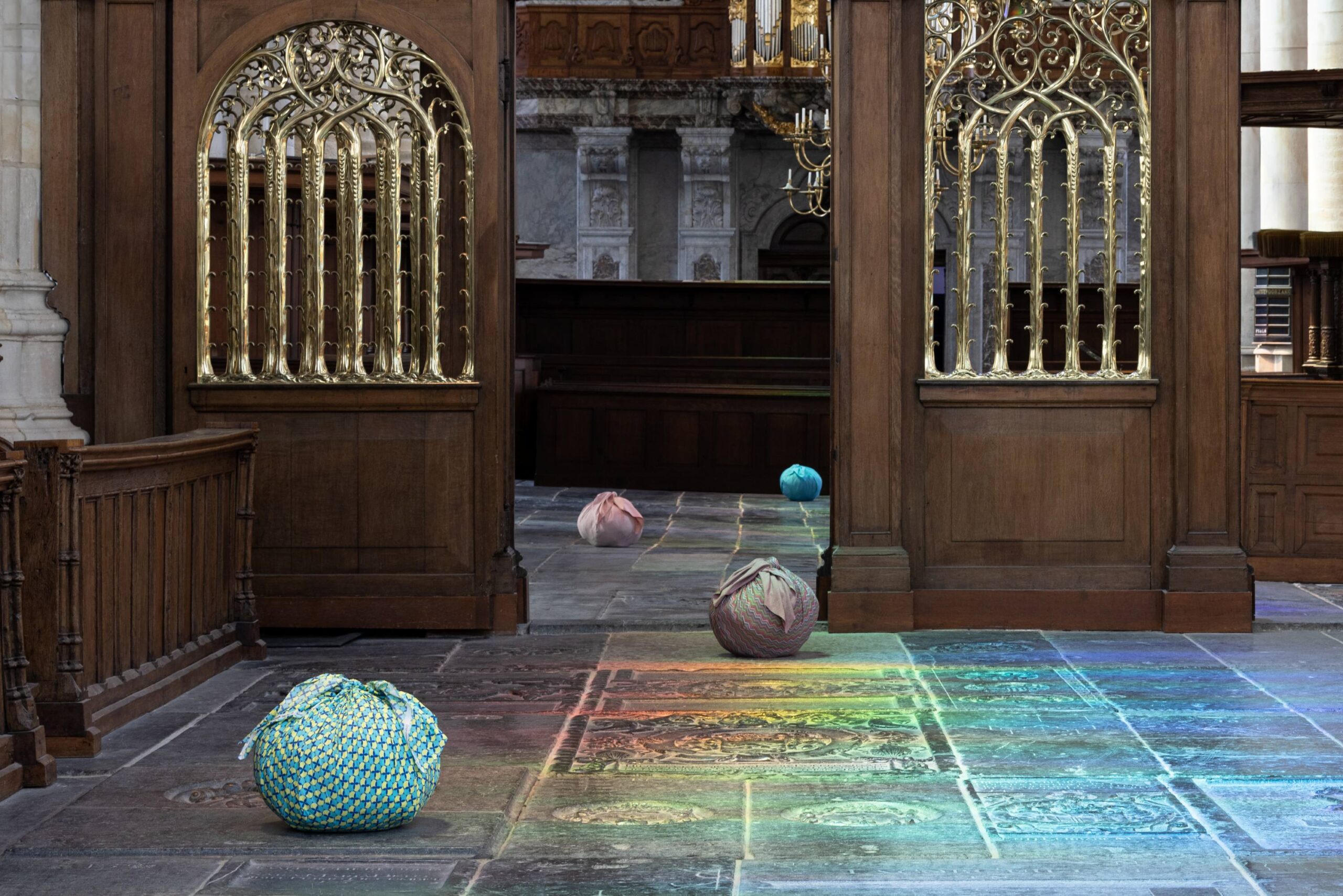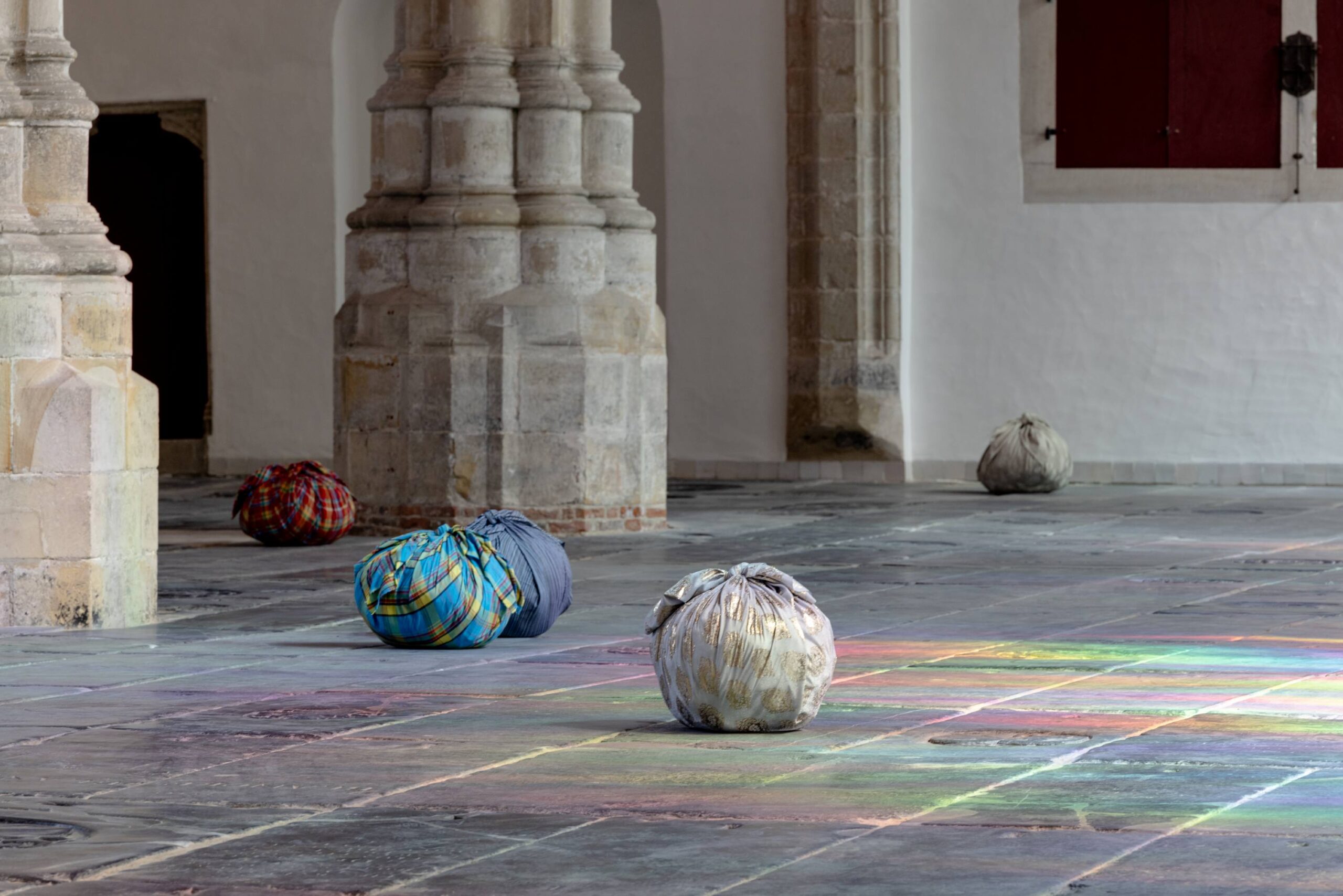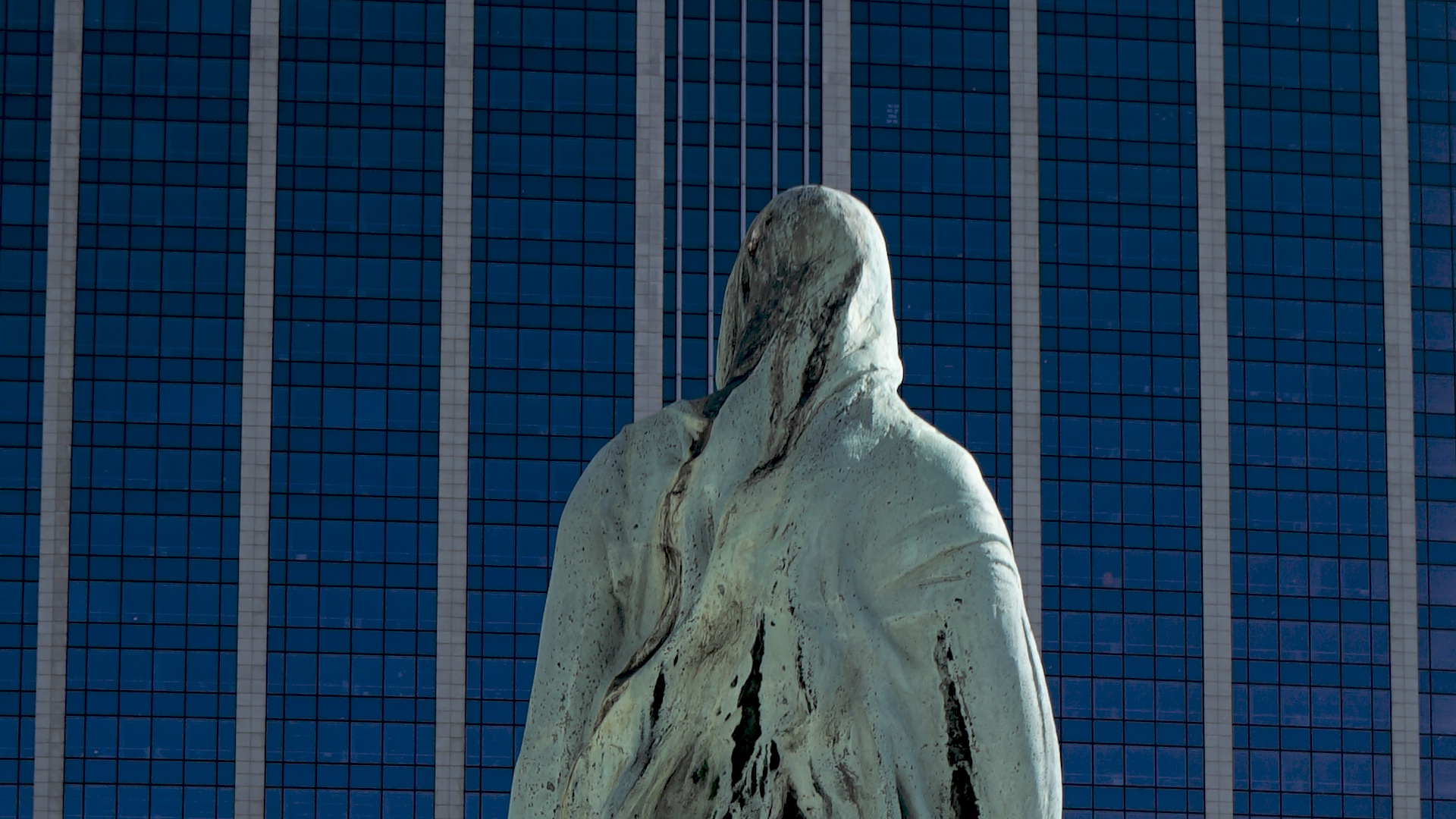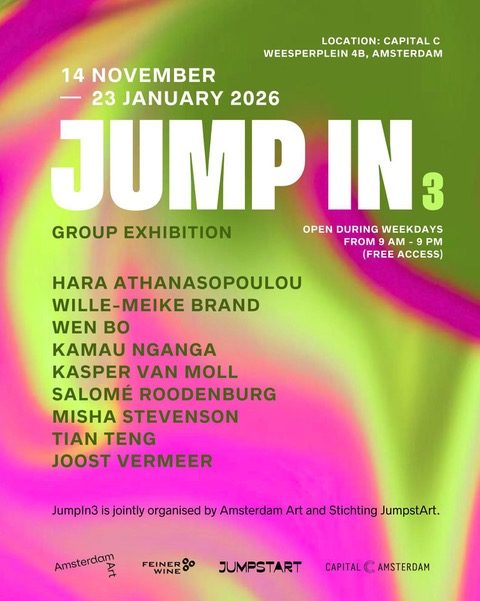De Oude Kerk presents To Breathe, a large-scale, site-specific installation by Kimsooja, one of the most prominent contemporary artists of our time. Opening during Amsterdam Art Week 2025, the exhibition offers a new perspective on themes such as migration, being in transit, and the idea of home, in relation to the city of Amsterdam.
Kimsooja transforms the sunlight in de Oude Kerk into a sea of rainbow hues. On the church’s stone floor, she places her bottari—Korean textile bundles symbolising travel and transition—created in collaboration with Amsterdam’s migrant communities. These bundles unite world history with personal stories.
Amsterdam, city of migration
Kimsooja scatters bottari across the gravestone floor—traditional Korean wrapping cloths used to carry belongings—made using clothing donated by migrant communities in Amsterdam. Through this, her installation celebrates the city’s long and rich history of migration. For centuries, migration has made Amsterdam one of the most diverse cities in the world. Even its earliest inhabitants were (climate) migrants who settled here after the All Saints’ Flood of 1170.
Rainbow light through Gothic windows
Kimsooja covers the windows of de Oude Kerk with a special film that refracts sunlight into a full spectrum of rainbow colours. This creates a shifting play of light and colour across the church’s walls and gravestones. Within the context of Gothic architecture—where light traditionally carries spiritual significance—the installation invites visitors to reflect on themes of identity, transformation, and the connection between the earthly and the divine.
A seafarers’ church
Migration is deeply woven into the history of de Oude Kerk. In 1306, the church was dedicated to Saint Nicholas, the patron saint of sailors, among others. For centuries, it served as a seafarers’ church, where people prayed for safe voyages and the return of ships. The church’s wooden barrel vault was constructed using shipbuilding techniques, resembling an inverted ship. One part of the building is even traditionally called the nave—the Latin word for ship. From Amsterdam’s earliest beginnings, migrant communities have lived in the neighbourhood surrounding de Oude Kerk.
About Kimsooja
Kimsooja (b. 1957, Daegu, South Korea) is a multidisciplinary artist whose work spans video, performance, installation, and social practice. Throughout her career, she has explored themes such as migration, identity, and the human condition, often addressing the transformative power of stillness and silence. Kimsooja’s work frequently incorporates materials, rituals, and concepts rooted in her Korean heritage, combined with a global perspective on the human experience.
Her iconic Bottari installations, which are made of bundles of traditional Korean cloth, have been shown internationally and symbolise themes of transition, memory, and migration. Kimsooja’s work has been exhibited in major museums and galleries worldwide, including the Tate Modern in London, the Guggenheim Museum in New York, and the Venice Biennale. Through her evocative installations and performances, Kimsooja continues to challenge perceptions of space, identity, and cultural exchange, offering profound reflections on both personal and collective histories.




